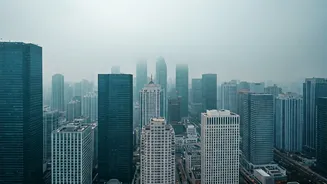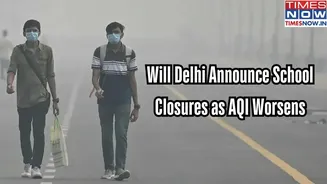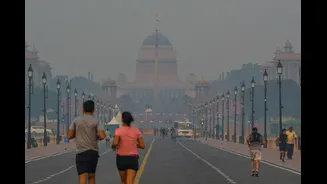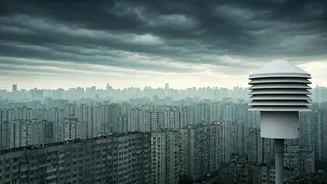The Grim AQI Report
On November 12, 2025, the air quality in Delhi-NCR presented a grim picture, with the AQI levels plummeting significantly. This deterioration had severe
repercussions for the city's inhabitants, who were now enduring air quality classified as 'hazardous.' The data indicated that Delhi residents were, in effect, 'smoking 15 cigarettes a day' due to the polluted air. This alarming revelation underscores the urgent need to address the environmental crisis and protect public health. The situation highlighted the immediate need for stringent measures to curtail pollution and safeguard the well-being of the population. The analysis of the air quality revealed the severity of the situation and its impact on everyday life.
Health Implications Explored
The 'hazardous' air quality in Delhi-NCR, as highlighted by the report, brought forth serious health implications. The daily exposure to such high levels of pollutants can lead to a host of respiratory issues, including asthma, bronchitis, and other lung ailments. Additionally, long-term exposure can elevate the risk of cardiovascular diseases and certain cancers. The equivalent of smoking 15 cigarettes daily emphasizes the severity of the situation, showing how profoundly it compromises health. The increase of pollutants in the air causes both immediate and long-term health challenges for residents, putting a strain on the healthcare system and decreasing overall quality of life.
Sources of Pollution
The crisis in Delhi-NCR is attributed to a combination of factors, including seasonal stubble burning in neighboring agricultural areas, vehicle emissions, industrial output, and construction activities. During certain times of the year, particularly during winter, these sources exacerbate the air quality problem. The meteorological conditions, such as temperature inversions and low wind speeds, trap pollutants close to the ground, increasing the concentration of harmful particles. Consequently, the combination of these elements creates a perfect storm for pollution, which demands multifaceted efforts to mitigate the issues and create better living conditions. The sources can vary depending on the time of the year and specific activities happening in the area.
Government Response & Action
Responding to this environmental emergency needs both immediate and long-term strategies. The government must focus on implementing and enforcing stricter emission regulations, promoting sustainable modes of transportation, and incentivizing the adoption of cleaner technologies. Moreover, increasing public awareness about air pollution, its causes, and its health effects is very important. Immediate actions like stopping construction and banning high-emission vehicles can offer temporary relief. However, only sustained efforts, along with community engagement, can assist in providing sustainable solutions to improve air quality and protect public health. The effectiveness will depend on the government's prompt responses and implementation of the environmental policies.
Citizen Initiatives & Solutions
Apart from governmental efforts, individual citizens also play a vital role in combating air pollution. This involves adopting more environment-friendly practices in their daily lives. For example, opting for public transportation, cycling, or carpooling can decrease the number of vehicles on the road. Also, embracing energy-efficient appliances and reducing reliance on private vehicles can make a difference. Moreover, raising awareness about the air quality situation and advocating for more sustainable practices can help create pressure on authorities to take action. Collective citizen initiatives, like community-led campaigns and educational programs, can offer solutions and inspire everyone to take care of the environment.















